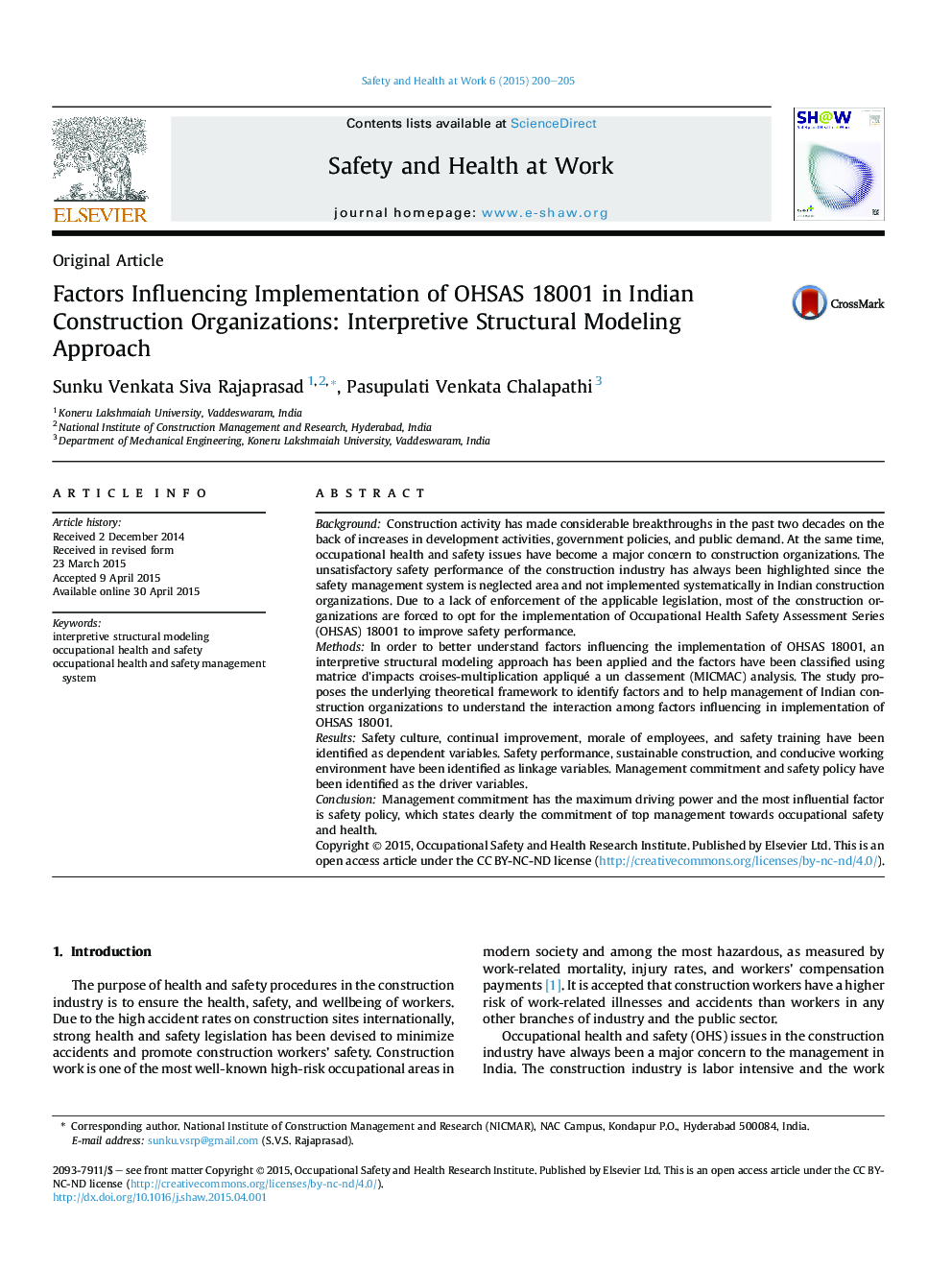| Article ID | Journal | Published Year | Pages | File Type |
|---|---|---|---|---|
| 1092077 | Safety and Health at Work | 2015 | 6 Pages |
BackgroundConstruction activity has made considerable breakthroughs in the past two decades on the back of increases in development activities, government policies, and public demand. At the same time, occupational health and safety issues have become a major concern to construction organizations. The unsatisfactory safety performance of the construction industry has always been highlighted since the safety management system is neglected area and not implemented systematically in Indian construction organizations. Due to a lack of enforcement of the applicable legislation, most of the construction organizations are forced to opt for the implementation of Occupational Health Safety Assessment Series (OHSAS) 18001 to improve safety performance.MethodsIn order to better understand factors influencing the implementation of OHSAS 18001, an interpretive structural modeling approach has been applied and the factors have been classified using matrice d'impacts croises-multiplication appliqué a un classement (MICMAC) analysis. The study proposes the underlying theoretical framework to identify factors and to help management of Indian construction organizations to understand the interaction among factors influencing in implementation of OHSAS 18001.ResultsSafety culture, continual improvement, morale of employees, and safety training have been identified as dependent variables. Safety performance, sustainable construction, and conducive working environment have been identified as linkage variables. Management commitment and safety policy have been identified as the driver variables.ConclusionManagement commitment has the maximum driving power and the most influential factor is safety policy, which states clearly the commitment of top management towards occupational safety and health.
